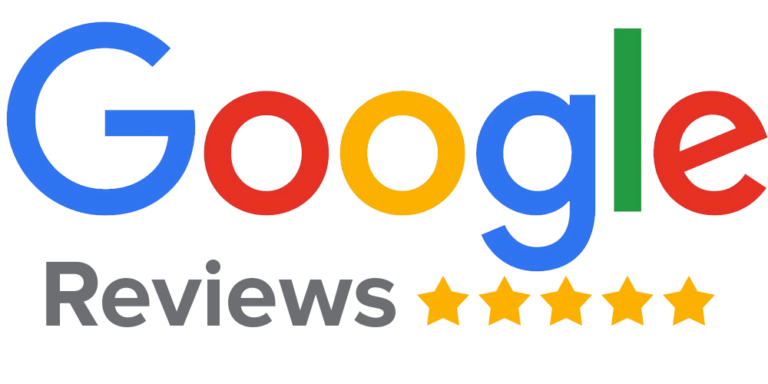Written by Bianca Baldo

Exploring a gender-based analysis can be a first step to understanding your diversity needs and increasing inclusive practices for your workforce. You may have already started to ask yourself:
- How does the present scheduling and environment affect different members of the team?
- Does the present structure create barriers towards some?
- What are the best practices available to address these barriers while meeting my productivity and efficiency deliverables?
In my recent blog, Using GBA+, Inclusion, and Diversity perspectives to support a healthy and efficient workplace, I offered a few starting points on these issues. Still, I thought it important to follow-up with a few tips on increasing efficiency, diversity, inclusion, and mental wellness. Importantly, workplaces need to start thinking about restructuring the workday to include self-care practices, technological support and regular check-in with staff. This article will explore how to increase productivity by allowing people to change the way they work and increase their autonomy to make decisions that promote mental health best-practices and avoid work-related burnouts.
Restructuring the workday to maximize efficiency.
Identifying the three priorities that will have the largest impact on your business. A clear business strategy through facilitated strategic discussions with your team is core to any company’s success and can reduce anxiety in your workplace. A well-crafted strategy will provide clear goals and guidelines towards this goal. By generating a clear roadmap covering strategic and operational planning, including priorities relating to diversity and inclusion, you can take the ambiguity out of work and ensure everyone is working towards the same objectives.
Business owner and Blogger Jenna Kutcher explores how to increase your results in less time by prioritizing your daily efforts that will have the most impact on moving your needle forward. Prioritizing allows you to clearly understand how to best use your time without placing increased demands on mental health or exacerbations of existing disabilities.
Encouraging time blocking for each priority, including task batching of similar tasks. The idea is to set aside a block of time to complete a specific priority and group together tasks similar to avoid switching contexts. This approach will allow the brain to be highly focused on the task at hand while accomplishing only the items that help move the overall business needs forward. This approach includes completing a series of similar tasks during a fixed time frame, i.e., researching and writing a few blog posts during a designated period will have better results than writing them at different times throughout the day. This will free up much needed time in your schedule to recharge your batteries. Time blocking can help all employees; specifically, those with anxiety or learning disabilities, by creating a routine that supports time management. It can enhance self-esteem, reduce stress in the workplace, home, and life in general.
Limit distractions, focusing on deep work. In the past, distractions typically came in the form of a talkative co-worker in a shared office space. Nowadays, employees often work from home where distractions are many, and it’s often our email and other notifications that interfere with our concentration. Creating a distraction-free space for work requires purposeful and mindful decision making.
In her Complete Guide to Deep Work, Blogger Fadeke Adegbuyi provides many strategies for promoting deep work. Amongst them, she suggests limiting online distractions by setting boundaries on the back and forth emails with colleagues and clients because these eat up valuable focus time. Limiting the amount of back and forth exchange by requesting one email at the beginning and end of the day can greatly impact your productivity. This will allow you to prioritize the first email and the required actions, and the end-of-day email for the following day’s tasks. You may also want to reduce the number of emails that warrant a response and develop a communication protocol that specifies when an email requires an answer. This will reduce email traffic and allow additional time for deep work.
Prioritizing shorter meetings. It is hard to dismiss findings like, for example, 47% see meetings as a time-waster, and professionals say they lose 31 hours a month on unproductive meetings. Consequently, it is estimated that a productive meeting should not be longer than 20 minutes as it is long enough to be considered serious and short enough to hold participants’ attention, particularly in an online meeting. Employers are looking towards the employees to increasingly have skills in drafting organization-wide meeting guidelines and actively facilitating meetings in an organized and timely manner. As an added bonus, shorter meeting means additional time to complete tasks quicker, leaving additional time to focus on rest and personal aspirations.
Offering Mentorship and Peer to Peer Learning
Mentoring and peer-to-peer learning can greatly impact productivity, inclusion and knowledge. It is a highly adaptable and safe relationship that can adjust to changing personal, professional, and environmental considerations. Furthermore, it fosters a sense of belonging and responsibility for both members towards each other’s success. This promotes an institutional culture that invests in its members.
Intersol is highly invested in mentoring and peer to peer learning. Professionally, I have had the opportunity to experience the first-hand effects of mentoring dynamics. It has allowed me to develop real solutions that reflect my family life obligations and work aspirations. I am highly thankful to my mentors, Marc Valois & Alain Rabeau, for sharing their expertise with me, and our CEO, Sue Perron, for prioritizing gender, inclusion and diversity and fostering my sense of belonging.
Promoting equality and diversity in self-care and wellness.
Showing interest in equality, diversity and inclusion. As previously mentioned, developing policies and practices that support diversity and inclusiveness can go along way to identifying and promoting care for employees. By engaging in an open and safe conversation with your colleagues, personalized accommodations can impact productivity and retention. Research has shown that people’s ability to be productive members is greatly impacted by workplace climate and attitudes toward diversity and inclusion. We are also seeing increased benefits across the board with people with or without disabilities and accessibility requirements that are requesting similar accommodations for other family/life wellness needs.
“Not surprisingly, they’re finding that people with disabilities fare much better in flexible, individualized environments than in settings that treat accommodations solely as legal mandates…Like working from home, flexible schedules to take care of children or older parents—those are things that can benefit all workers, not just those with disabilities.” – Tori DeAngelis, American Psychological Association.

Encouraging a work-life wellness through a value-driven schedule. Striking a balance between the demands of one’s career and the demands of one’s personal life is never easy. It takes concerted effort and support by employers to identify the most important family values and design your schedule accordingly. This approach is aligned with developing a values-driven schedule, which requires that you determine the most important elements to you and your family. This information is then used to craft your calendar around those priorities, rather than forcing your family and yourself to fit in around whatever finds its way to your schedule.
“Employers who are committed to providing environments that support work-life balance for their employees can save on costs, experience fewer cases of absenteeism, and enjoy a more loyal and productive workforce,” Chris Chancey, career expert and CEO of Amplio Recruiting.
Providing support for self-care and wellness. An employer can go a long way to promote the self-care of employees. This might include offering access to health insurance wellness benefits and encouraging its regular use, particularly focusing on a preventative wellness approach. Having access to professionals and specialists in self-care can reduce employee stress and burnout.
Researchers have also been pointing towards the benefits of rest, sleep, and naps during work hours to encourage employee care and increased productivity. The impacts of napping can vary depending on the length. Shorter naps (20 minutes) have been associated with memorizing and learning specific bits of information, whereas longer naps (60-90 minutes) can improve creativity, perceptual processing, and highly associative thinking.

Does the saying “live to work, rather than work to live” sound unfamiliar? It should, most Canadians rank low on rankings for the number of mandated vacation days per year, with just 10.
This is low compared to other countries high on the list, such as the UK (28), Sweden, Norway, Denmark, and France (all 25). We know that there are obvious benefits from taking vacation time; it leads to higher productivity, stronger workplace morale, greater employee retention, and significant health benefits. A survey by Oxford Economics in Forbes highlights that:
“nearly 34 percent of employees surveyed indicated that their employer neither encouraged nor discouraged leave, and 17 percent of managers considered employees who take all of their leave to be less dedicated.”
In North America, vacation time is still associated with negative stereotypes about employees’ dedication. Rather, a self-care perspective argues that not taking a vacation can impact the company’s wellness and overall financial health as it stockpiles unpaid leave to be paid out at a later date. An optimal solution is to lead by example, taking vacation time, and encouraging colleagues to do the same can greatly reduce mental health and wellness challenges in the workplace.
Using technology to maximize efficiency.
In recent months, we have seen just how technological alternatives have been essential in allowing government, business, and not-for-profit to continue to provide their service offering during Covid-19. Software such as Zoom, BlueJean, MSTeams, and others have allowed employees to continue their work from home while respecting social distancing conditions. Technology has changed the way we engage with each other and expanded the traditional vision of working environments.
Using technology to work smarter rather than harder. This saying speaks to different approaches that can be used in the work environment to minimize wasted time and maximize productivity and creativity. Below are a few examples where using technology can help your meeting:
- Recording your meeting to reduce the time used taking notes and transcribing minutes;
- Automating your meeting in a weekly, monthly, bi-annually, and annually fashion to minimize time spent coordinating schedules;
- Using Artificial Intelligence software such as Reason8 to study communication patterns and identify ways to improve time management.
Zoom Fatigue is real. That being said, Zoom burnout has become a real issue in the last few months, where employees are continuously being asked to participate in online meetings without substantive guides about best practices to manage offline time and recuperation time between online meetings.
The Harvard business article “How to Combat Zoom Fatigue” acknowledges this current phenomenon and offers solutions to combat Zoom fatigue. It explores a few solutions to reduce Zoom burnout. It recommends:
- Avoiding multitasking while in an online meeting, such as working during online training.
- Building in breaks during and between online meetings to resource energy, such a health breaks and physical exercise between meetings
- Reducing on-screen stimulation, such as turning off your camera so that you cannot see your image. Although busy online backgrounds are fun, they are distracting and can reduce productivity.
- Making virtual social events opt-in only.
Working with stakeholders to develop inclusive solutions.
No one approach fits all. Each person is different and faces diverse challenges when exploring efficiency and wellbeing in the workplace. Understanding the particular barriers faced by different colleagues means taking the time to prioritize communication on these issues. Be mindful that these can be sensitive issues and need to be approached with respect and tolerance.

Promoting diversity and inclusive practices in working environments and scheduling can reduce the barriers experienced by everyone. The restructuring of the workday, the promotion of self-care, rest for your workforce, and technology use are examples of ways to support increased efficiency and work satisfaction.
Make gender equality, inclusion and diversity part of your institutional culture. Importantly, improving diversity and inclusion, reducing barriers, and developing strategies to improve efficiency requires a collective commitment to communication and consultation. Here at Intersol, we are constantly tweaking our internal practices and supporting our clients in their process to increase gender equality, inclusion and diversity with their personnel and external stakeholders. It is possible to increase efficiency and productivity while demonstrating a strong commitment to work/life balance and mental wellness. We hope these ideas are helpful, and we encourage you in your journey towards a successful and healthy workplace that reflects diversity and inclusion.


